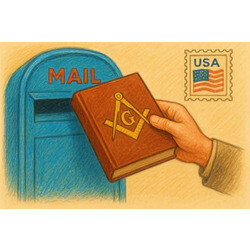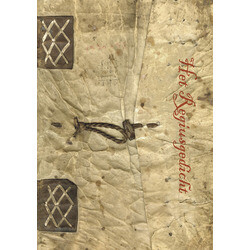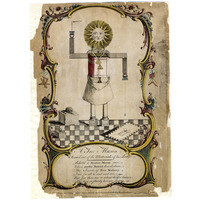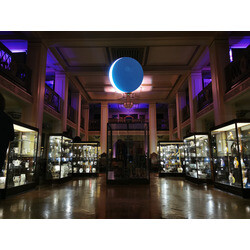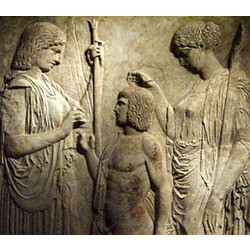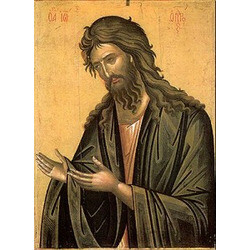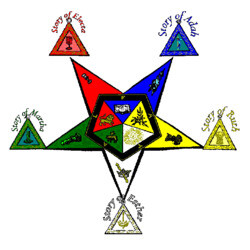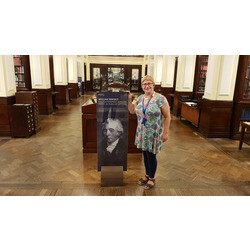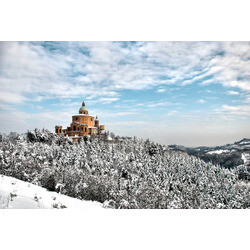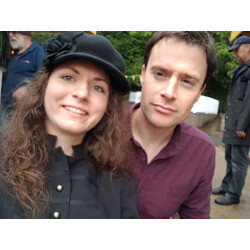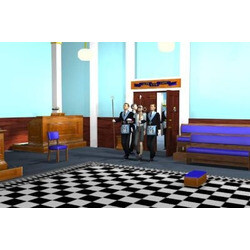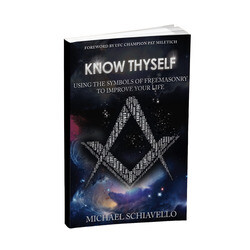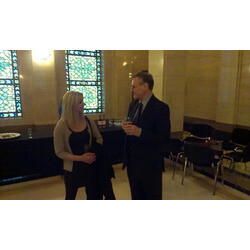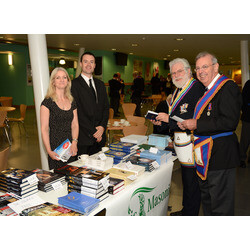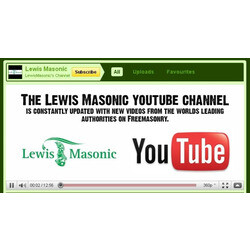Introduction 11
A Note on Sources 39
Preparatory Essay : A General Idea of the Society of the Illuminati 44
I. Minerval Class
1. Noviciate
Obligation. Letter of a Candidate 49
Instructions for the Insinuati, or Recepti 49
Instructio pro insinuantibus seu recipientibus 51
General Statutes of the Order 52
An Easy Cipher for Ready Use 58
2. Minerval Degree
Statutes for the Minervals 59
Initiation Ceremonies 62
Form for an Initiation Minutes for Absent, Adult Candidates, Who Would
Object to Being Initiated in the Same Manner as Very Young Men 67
Introduction Ceremonies 69
Statutes and Ceremonies for the Minerval Assemblies 70
Calendarium 78
Correct Pronunciation and Spelling of the Persian Months of Our Calendar 79
3. Minervalis illuminatus, or Illuminatus minor
Instructions for the Superior of the Minerval Church Concerning
the Issuing of this Degree 80
Addendum A. Address During the Initiation of an Illuminatus minor 83
Addendum B. Instructions for a Better Understanding of the Order’s
Organisation 87
Addendum C. Instructions for the Education of Useful Collaborators 92
Addendum D. A Lesson the Illuminati minores Receive in Writing 100
Addendum E. Explanation of the Minerval Allegories 103
4. Initiation of a Magistrate of the Minerval Church
Ceremonies for the Initiation of a Magistrate 105
Instructions for the Minerval Magistracy 107
Instructio pro Superiori 109
De officio Censoris 111
De officio Quaestoris 112
De officio Secretarii 113
II. Freemasonic Class
A) Symbolic Freemasonry
I. Ritual Book for the three Symbolic Degrees
Introduction 115
1. Ritual for the Entered Apprentice Lodge 116
Before the Lodge is Opened 120
Opening of the Lodge 120
Initiation into the Entered Apprentice Degree 121
Catechism 128
Questions One Can Ask a Brother Entering the Lodge 131
Closing a Lodge 131
On Table Lodges 131
Ritual for the Consecration of a New Lodge 133
Ritual for the Excommunication of a Brother 134
Ritual for the Table Lodges, if Sisters Are Present 135
2. Fellow Craft Degree
Ritual for the Fellow Craft Lodge 136
Initiation into the Fellow Craft Degree 137
Catechism of the Fellow Crafts 141
Closing the Fellow Craft Lodge 142
Secret Cipher of the Freemasons 142
3. Ritual for the Master Lodge
Opening the Master Lodge 144
Initiation of the Master 144
Closing the Master Lodge 150
II. Improved Constitution Book for the St. John’s Lodge
A) General Constitutional Articles, which Must Be Read Out in Every Lodge
Introduction 151
I. Character and Qualities of a True Mason 151
II. Public Conduct 152
III. Information about Other Institutions 156
B) Statutes for this Particular Lodge
C) Particular Articles of Instruction, Must Be Read during Every Officers Lodge
I. Instructions for the Officers Lodge 159
II. Special Instructions for the Worshipful Masters 162
III. For the Deputy W. M. 163
IV. For the Senior Warden 163
V. The Junior Warden 164
VI. The Secretary 164
VII. The Treasurer 165
VIII. The Master of Ceremonies 165
IX. The Almoner 166
X. The Housekeeper 166
XI. The Orator 167
XII. The Stewards 167
XIII. The Sick Visitor 167
XIV. The Decorator 167
XV. The Librarian 168
XVI. Information about the Serving Brethren 168
Addendum A. Report about the State of the Lodge 169
B) Scottish Freemasonry
I. Scottish Novice
Introduction 171
I. Opening the Lodge of the Scottish Brethren 171
II. Catechism of the Scottish Brethren 172
III. Closing the Scottish Brethren Lodge 173
IV.
Information About the Working Lodges, Where the Main
Points Should Always Be Read 173
V. Lodge Ritual for the Initiation to this Degree 174
Addendum A. Secret Instructions for those Tasked with
Recruiting New Members to the O. 186
Addendum B. Questions Used for Assessing the Character of a
Candidate for this Degree 188
Addendum C. Nosce te ipsum ! 200
II. Illuminatus dirigens
Introduction 203
I. Further Information and General Instructions 204
II. Instructions Concerning the Lower Classes 205
III. Instructions Concerning the Freemason Lodge 207
IV. On the Reception into this Degree 210
V. Of the Solemn Chapters for Initiation 212
VI. Opening the Chapter 213
VII. Initiation Ritual 214
VIII. Closing the Chapter 228
IX. Of the Love-Feasts or Agapes 229
X. Ceremonies during the Consecration of a Chapter 230
Addendum A. Form for the Lodge Constitution 231
Addendum B. The Prefect’s Order Star 232
Addendum C. The Knights’ St. Andrew’s Cross 232
Addendum D. Secret Cipher of the Scottish Knights 233
Addendum E. Explanation of the Masonic Hieroglyphs 233
Addendum F . Catechism of the Scottish Knights 238
III. Mysteries Class
A) Lesser Mysteries
I. Lesser Priest Degree. Presbyter
Introduction 240
Further Information Concerning the Acceptance to this Degree 242
Ritual for Continued Initiation 243
Addendum A. Instruction in the First Chamber 247
Addendum B. Instructions for the First Degree of the Priest Class 280
Addendum C. On the Initiation of a Decanus 293
II. Lesser Regent Degree. Princeps
Notification to the Provincial Superior Regarding the Issuance of this Degree 300
Initiation Ritual 302
Addendum A. Administrative System for the Entire Order 309
Addendum B. Instructions for the Entire Regent Degree 312
Addendum C. Instructions for the Prefects, or Local Superiors 317
Addendum D. Instructions for the Provincial Superiors 328
B) Higher Mysteries
I. Docetists 332
II. Philosophi. Sages 349
IV. Appendix
A School for Humanity 380
Some Early Documents 390
Statutes of the Illuminati 390
Reform of the Statutes of the 1st Class 396
Guiding Idea 402
Instructio pro Recipientibus 404
Instructio Insinuatorum 408
Instructions for Those Who Have Received the Facultas insinuandi 409
24 Points Designed to Be Presented as Questions to New Candidates 411
General Explanation of the Society of the Illuminati (alternative beginning) 412
Supplement to the Illum. min. for the Better Instruction of the Superior 413
Preparation for Those Who Are to Participate in Governing the Order 418
Footnotes to a Revised Presbyter Degree 434
Instructions for the National Inspectors 438

